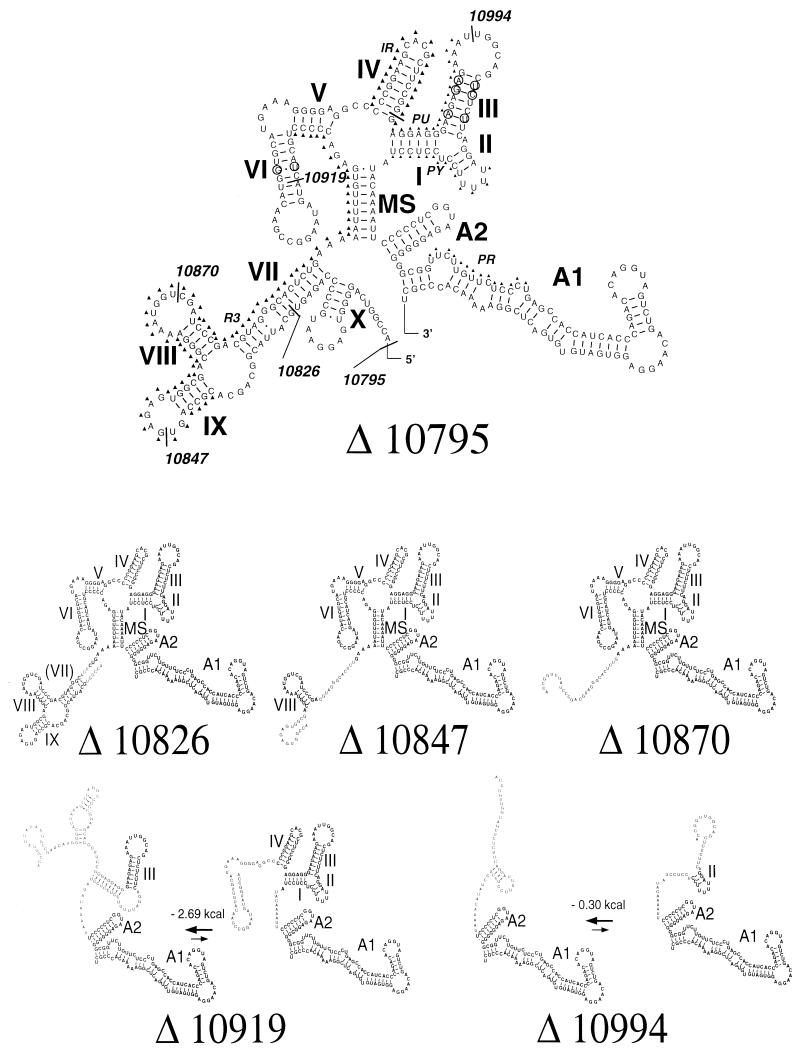FIG. 2.
RNA secondary-structure predictions of the 3′ NCRs of the TBE virus deletion mutants. Sequences are shown starting with the first nucleotide following the stop codon, which is also the first nucleotide of an AgeI restriction site (Fig. 1). At the top is the structure of the 3′ NCR as present in mutant R-Nd/3′Δ10795, corresponding exactly to the previously published structure of the TBE 3′-NCR core element (27). The borders of the individual engineered deletions are indicated by the corresponding nucleotide numbers. Positions of the sequence elements R3, IR, PU, PY, and PR (compare Fig. 1) are indicated by triangles next to the sequence. Base-pairing elements are denoted by Roman numerals (I to X), MS depicts a multiloop-stem, and A1 and A2 are the known conserved flavivirus 3′-terminal structures. Below are structures as predicted for the truncated sequences present in the various deletion mutants. Wild-type structural elements are shown in boldface type; sequences in undefined or nonauthentic folding patterns are shown in normal type. A truncated form of stem VII is shown in parentheses. The two sequences carrying the largest deletions may adopt two alternative structures in which the energetically favored ones (energy differences are shown) lack some of the wild-type base-pairing elements.

